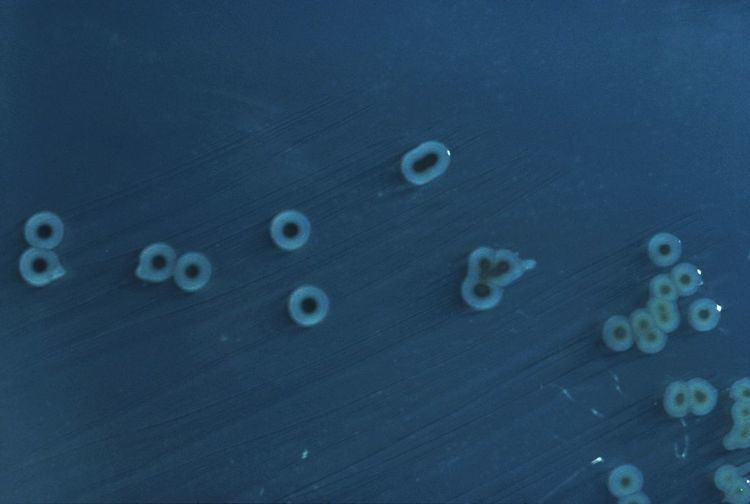Domain Bacteria Phylum Proteobacteria Family Enterobacteriaceae Scientific name Salmonella enterica Higher classification Salmonella | Kingdom Eubacteria Order Enterobacteriales Genus Salmonella Rank Species | |
 | ||
Similar Bacteria, Escherichia, Enterobacteriaceae, Shigella flexneri, Listeria | ||
Salmonella enterica
Salmonella enterica (formerly Salmonella choleraesuis) is a rod-shaped, flagellated, facultative anaerobic, Gram-negative bacterium and a member of the genus Salmonella. A number of its serovars are serious human pathogens.
Contents
Epidemiology
Most cases of salmonellosis are caused by food infected with S. enterica, which often infects cattle and poultry, though also other animals such as domestic cats and hamsters have also been shown to be sources of infection to humans. However, investigations of vacuum cleaner bags have shown that households can act as a reservoir of the bacterium; this is more likely if the household has contact with an infection source, for example members working with cattle or in a veterinary clinic.
Raw chicken eggs and goose eggs can harbor S. enterica, initially in the egg whites, although most eggs are not infected. As the egg ages at room temperature, the yolk membrane begins to break down and S. enterica can spread into the yolk. Refrigeration and freezing do not kill all the bacteria, but substantially slow or halt their growth. Pasteurizing and food irradiation are used to kill Salmonella for commercially produced foodstuffs containing raw eggs such as ice cream. Foods prepared in the home from raw eggs such as mayonnaise, cakes, and cookies can spread salmonella if not properly cooked before consumption.
Pathogenesis
Secreted proteins are of major importance for the pathogenesis of infectious diseases caused by Salmonella enterica. A remarkable large number of fimbrial and non-fimbrial adhesins are present in Salmonella, and mediate biofilm formation and contact to host cells. Secreted proteins are also involved in host cell invasion and intracellular proliferation, two hallmarks of Salmonella pathogenesis.
Small non-coding RNA
Small non-protein coding RNAs (sRNA) are able to perform specific functions without being translated into proteins. 97 bacterial sRNAs from Salmonella Typhi were discovered by Chinni et al.
Nomenclature
Salmonella enterica has 7 subspecies, and each subspecies has associated serovars that differ by antigenic specificity. There are over 2500 serovars for S. enterica. Salmonella bongori was previously considered a subspecies of S. enterica, but it is now the other species in the Salmonella genus. Most of the human pathogenic Salmonella serovars belong to the S. enterica subsp. enterica subspecies. These serogroups include Salmonella Typhi, Salmonella Enteritidis, Salmonella Paratyphi, Salmonella Typhimurium, and Salmonella Choleraesuis. The serovars can be designated as written in the previous sentence (capitalized and non-italicized following the genus), or as follows: "S. enterica subsp. enterica, serovar Typhi."
